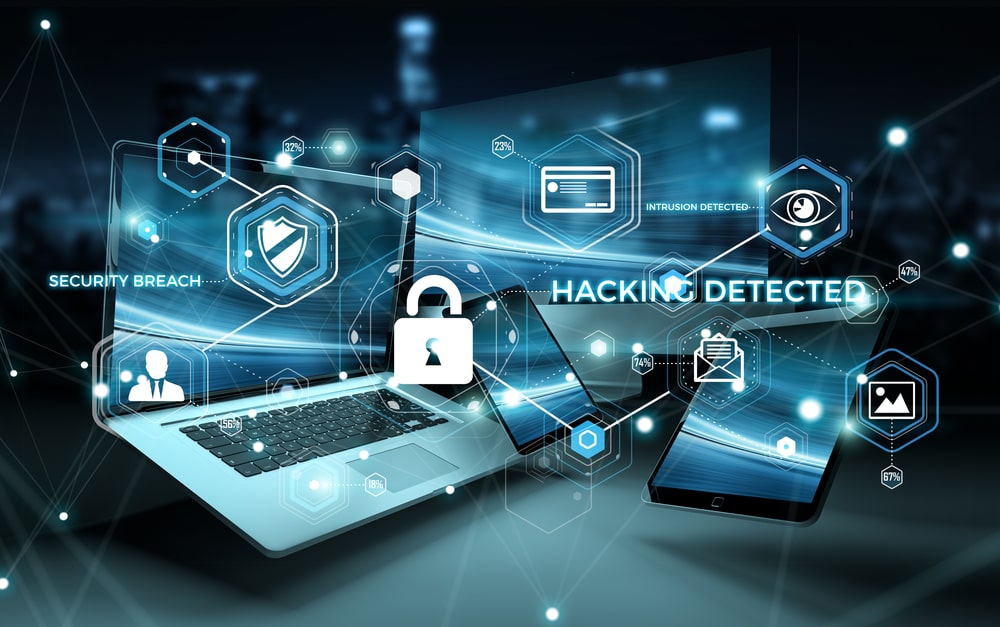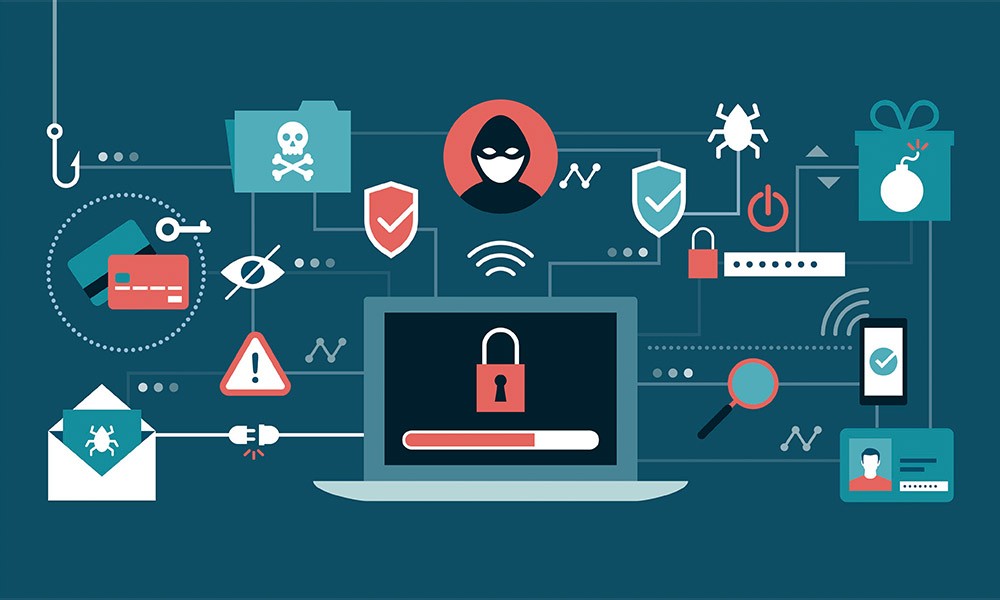Introduction: 2025 — The Year Cybercrime Gets Smarter
Welcome to the future — where cyberattacks don’t just rely on brute force or basic phishing schemes. In 2025, threat actors are using AI to write smarter attacks, deepfakes to trick staff, and target your supply chain instead of you.
The rules have changed.
Today’s SMBs are operating in a global digital economy that’s constantly online, constantly connected — and unfortunately, constantly under attack.
Fact: 43% of cyberattacks now target small and mid-sized businesses, many of which lack modern security protections.
Whether you’re running a growing business in Calgary, managing legal contracts in New York, or leading a startup in London — this guide outlines the next-gen cyber threats you must prepare for now.
Threat #1: AI-Powered Phishing and Social Engineering
What It Is:
Phishing emails used to be full of broken English and sketchy links. But in 2025, AI-generated phishing is smarter, more targeted, and nearly impossible to detect by eye.
Using AI models like GPT clones and fine-tuned large language models, attackers can:
- Mimic real email threads
- Use your organization’s writing style
- Impersonate executives down to tone and punctuation
- Send “just-in-time” requests aligned with known business events
Real-World Case:
An HR coordinator in Vancouver received an urgent Teams message — seemingly from the CEO — asking for sensitive salary data. It was AI-generated and used correct language, context, and timing. The attacker even replied convincingly in follow-ups. Thankfully, the company had enforced multi-person approval for sensitive data.
How to Defend:
- Deploy AI-based email security (e.g., Avanan, Barracuda Sentinel)
- Use internal naming conventions that attackers can’t guess
- Require dual-approval workflows for any high-risk action
- Conduct simulated AI-phishing exercises every 60–90 days
- Limit public exposure of executive contact info
Threat #2: Supply Chain Compromise via SaaS Platforms
What It Is:
Your business depends on dozens of third-party platforms — CRMs, document storage tools, invoicing systems, marketing software — all of which have access to your data.
Attackers have figured out it’s easier to compromise your vendors than your firewall.
These “indirect” attacks are known as supply chain compromises — and in 2025, they’re one of the top threats globally.
Industry Case:
In 2024, a contract management SaaS used by thousands of law firms was breached. Hackers replaced login pages with credential harvesters — affecting firms in the US, Canada, and UK. One legal firm lost privileged case files to dark web auctions.
How to Defend:
- Audit third-party vendors quarterly
- Ask providers for certifications: SOC 2 Type II, ISO 27001, CSA STAR
- Enforce Zero Trust principles with strict API access
- Use SaaS Security Posture Management (SSPM) tools
- Monitor third-party traffic and webhook events with alerts
Tip: Create a vendor risk matrix — ranking vendors by data access & business impact.

Threat #3: AI-Driven Malware & Ransomware
What It Is:
Traditional ransomware used predictable patterns — it spread, encrypted, demanded payment.
AI ransomware in 2025 is adaptive.
It:
- Avoids detection by learning system behavior
- Targets files that matter most (contracts, HR docs, backups)
- Triggers during business hours for max damage
- Automatically shuts down backup processes
Real Example:
A Toronto-based construction company was hit by ransomware that excluded .jpg and .zip files — encrypting only business-critical documents like AutoCAD files, invoices, and NDAs.
How to Defend:
- Use EDR (Endpoint Detection and Response) tools (e.g., CrowdStrike, SentinelOne)
- Implement application whitelisting
- Set up honeypots for behavioral triggers
- Test ransomware recovery plans monthly
- Backups: store off-site, encrypt, and validate restores
Advanced Tip: Use immutable backups (WORM storage) so ransomware can’t overwrite them.
Threat #4: Deepfake CEO Fraud and Video-Based Impersonation
What It Is:
Deepfakes have moved beyond politics and YouTube spoofs. In 2025, attackers are now using AI-generated video and audio to impersonate real people.
Fake Zoom calls. Fake investor pitches. Even fake live chats.
Employees may be convinced to transfer money, share credentials, or approve actions based on deepfake media.
Use Case:
A US-based electronics retailer received a Slack video clip from their “CTO” instructing them to approve access for a third-party vendor. The video was AI-generated using past YouTube content and public interviews. The attackers gained access to financial systems.
How to Defend:
- Ban business approvals via messaging platforms (Slack, WhatsApp)
- Require voice + video + follow-up email for approval
- Publish internal “communication verification protocols”
- Use deepfake detection tools (e.g., Deepware, Sensity AI)
- Create awareness training specific to voice/video spoofing
Bonus Tip: Monitor YouTube/social media exposure of leadership — reduce risks by limiting facial/video data online.
Threat #5: Mobile Device Hijacking (BYOD & Smishing)
What It Is:
More employees are working remotely — using personal phones to check email, download reports, or access CRM dashboards.
Attackers are now delivering malware via:
- Fake QR codes on posters or invoices
- Malicious authenticator apps
- Smishing (SMS phishing)
- Compromised mobile browser plugins
Example:
A real estate agent in Calgary scanned a QR code in a coffee shop (masquerading as a free Wi-Fi login) and unknowingly installed spyware that synced their clipboard and forwarded their business emails.
How to Defend:
- Deploy Mobile Device Management (MDM) like Microsoft Intune or Kandji
- Enforce containerization on BYOD phones
- Require approval for mobile app installs
- Use Mobile Threat Defense (MTD) platforms
- Regularly audit employee devices and app permissions
Stat: Over 50% of business-related data leaks in 2024 involved a mobile device (Check Point Research).
Also Read : Future Trends in Data Backup & Disaster Recovery

Bonus Threat: Quantum Decryption Is Closer Than You Think
Quantum computing promises revolutionary breakthroughs — but it also threatens to break current encryption methods.
Your current SSL, VPN, and encrypted databases could all be decrypted in minutes by a future quantum system — rendering most cybersecurity obsolete.
While we’re still a few years from mainstream quantum decryption, attackers are already storing encrypted data with plans to decrypt it later (a method called “Harvest Now, Decrypt Later”).
How to Prepare:
- Track NIST’s post-quantum cryptography standards (Kyber, Dilithium, etc.)
- Start using hybrid encryption algorithms
- Work with vendors who are investing in quantum readiness
Pro Tip: Mention this in your RFPs when choosing tech vendors in 2025 and beyond.
Myths vs. Facts
| Myth | Reality |
| “Only big businesses are targets.” | SMBs are hit more — they’re less protected. |
| “AI is helping protect us.” | It’s also powering the attacks. |
| “I can spot a fake email or video easily.” | Deepfakes and AI-crafted content bypass human filters. |
| “Mobile devices are secure by default.” | They’re often the weakest link in your environment. |
Cybersecurity Metrics You Need to Watch in 2025
| Metric | 2025 Forecast |
| Avg. ransomware cost | $1.85M (up 30%) |
| % of attacks using AI tools | 35–40% |
| % of businesses using over 20 SaaS tools | 75% |
| % of orgs with deepfake policies | < 15% |
| % of mobile-first malware infections | 31% |
Final Thoughts
2025 marks a turning point — not just in technology, but in the methods attackers use to breach businesses.
AI is no longer just a tool for good — it’s in the hands of bad actors too. Deepfakes, mobile exploits, and invisible supply chain compromises make the cyber landscape more complex than ever.
That’s why proactive preparation matters more than ever.
At GoGeekz, we help you:
- Detect next-gen threats
- Train your team
- Secure your data
- Modernize your defense strategy
Want to see how exposed your business is to 2025’s cyber threats?
Book Your FREE Cybersecurity Risk Audit with GoGeekz
Don’t wait for a breach — let’s build your future-proof defense today.
FAQs
Industry Experiences
Innovative services for your business
We’re dedicated to making your businesses reliable, efficient, and safe.
We’re a one-stop solution for everything IT you need. Whatever you need, we got you covered:
Conduct a cyber risk assessment, implement EDR, train staff, and audit vendors.
Supply chain compromise — most SMBs don’t vet their SaaS providers.
Yes. We offer AI detection tools, phishing simulations, deepfake training, and endpoint security tailored for SMBs.
MDM, app controls, containerization, and zero-trust policies.
Book a free cybersecurity audit with GoGeekz — we’ll evaluate your risk profile and guide you step by step.



